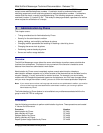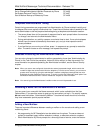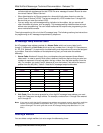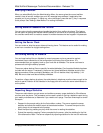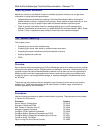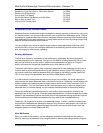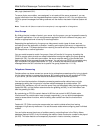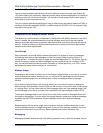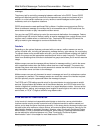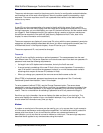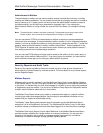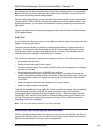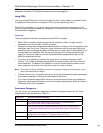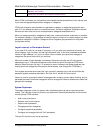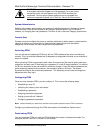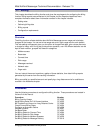
Mitel NuPoint Messenger Technical Documentation - Release 7.0
must use GCOS and FCOS settings to enforce restrictions on which mailboxes can exchange
messages.
The primary tool for controlling messaging between mailboxes is the GCOS. Correct GCOS
settings can effectively partition a server so that separate user groups are not aware of one
another, or so that certain mailboxes can only receive or send messages to other specific
mailboxes, such as in dispatcher situations.
GCOS structures also create partitioned Dial-by-Name. A mailbox owner cannot use Dial-by-
Name to address a message to a mailbox that is not accessible due to GCOS restrictions; the
server does not match or play inaccessible mailbox names.
You can also use FCOS settings to control the sources and destinations for messages. Feature
bits 040 through 045 control a mailbox’s ability to receive messages from various sources, such
as other users, outside callers, or distribution lists. Feature bits 020 through 035 control the
ability to make or give messages to users and distribution lists.
Outdials
Depending on the optional features purchased with your server, mailbox owners can send a
variety of outdial calls, including call placement, message delivery, auto wakeup, fax, and paging.
To prevent abuse and to provide better call traffic, you can restrict different outgoing call types to
specific line groups and set appropriate restrictions and limits on each line group. This prevents
users from accessing other services on dedicated line groups and allows you to monitor resource
usage.
Mailbox owners can use the message delivery feature for message waiting, in which the server
calls a specified number when the mailbox owner receives a new message. The person who
answers the phone must enter the correct passcode to access the mailbox, thus ensuring that
only the mailbox owner can listen to the message.
Mailbox owners can use call placement to record a message and send it to a telephone number
(as opposed to a mailbox). The message sender can record the name of the intended recipient
and can optionally require a passcode before the message is played.
The FCOS and LCOS settings provide a tool for the administrator to control access to outdial
services. Various feature bits enable use of the different features, and LCOS limits control the
number of digits that a mailbox owner can enter for a target telephone number. You can set the
message delivery, paging, and message phone lengths to seven digits to limit calls to the local
service area, or 10 (or 11) digits to allow for long distance calls.
FPSA and Server Administration
In the hands of a trained and responsible administrator or technician, server administration
functions can be used to provide convenient and full-featured service to mailbox owners and
callers, and to keep the server functioning smoothly. In the wrong hands, the same functions can
be used to take over mailboxes, disrupt service, and even shut down the server. Security for the
administration function is extremely important. However, when Functionally Partitioned System
Administration (FPSA) is activated and configured, server security is assured because access
can be restricted to authorized persons only. (See “Functionally Partitioned System
Administration” later in this chapter for more details about FPSA.)
©
Copyright 2002, Mitel Networks Corporation 139



